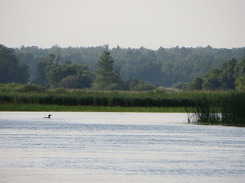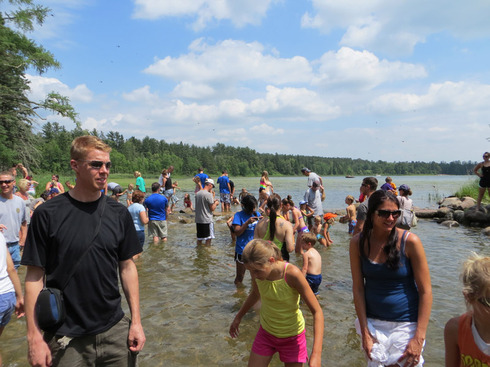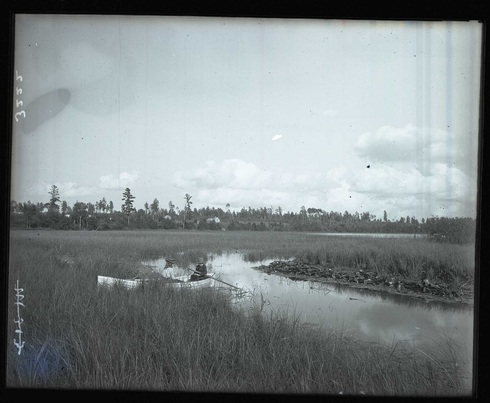 In early July my fiancé and I, along with his brother and wife, spent two nights and three days camping at Schoolcraft State Park in northern Minnesota. The park is named after Henry Rowe Schoolcraft, the geologist that discovered the true headwaters of the Mississippi River – a lake in Clearwater County that Schoolcraft renamed Itasca upon his discovery in 1832. (Itasca being an amalgamation of the Latin words veritas and caput, truth and head).
In early July my fiancé and I, along with his brother and wife, spent two nights and three days camping at Schoolcraft State Park in northern Minnesota. The park is named after Henry Rowe Schoolcraft, the geologist that discovered the true headwaters of the Mississippi River – a lake in Clearwater County that Schoolcraft renamed Itasca upon his discovery in 1832. (Itasca being an amalgamation of the Latin words veritas and caput, truth and head).
While setting up our tents at our Schoolcraft campsite, we got to talking about Itasca State Park, Minnesota’s first state park (established in 1891) and the headwaters contained within. While assembling my tent pole I casually commented that I had never visited Itasca and would like to see the headwaters someday.
“You haven’t seen the headwaters of the Mississippi River!?“ exclaimed a member of our party. Before I could even answer to confirm, it was decided that we would depart for Itasca – only an hour and a half drive from Schoolcraft – the following day. “You have to see the headwaters.”
When we arrived at Itasca our first stop was the Jacob V. Brower Visitor Center, where I learned of Mary Gibbs – the young park resident who stood up to encroaching lumbermen in 1903 to protect the forest, the Civilian Conservation Corps improvements, and the scientific studies performed at the Itasca Biological Station. After our history lesson, we headed to the head of the Mississippi River. The formation of rocks that connects the two sides of the Mississippi at the outlet from Lake Itasca was packed with visitors who waded in the shallow waters at the site of the headwaters. We tossed our shoes and socks, and felt the calm flow of the river as we steadied ourselves to walk across the slippery stones. After our feet dried, and I made a mental check mark next to “visit headwaters of the Mississippi” on my invisible bucket list, we had a picnic lunch, rented a canoe and paddleboat, and spent the rest of the day out on the lake.

– Mississippi River outlet of Lake Itasca, the “headwaters,” July 2013.
It was serendipitous that my future brother and sister in law, individuals highly fond of the out-of-doors, insisted that we visit Itasca State Park that day. A few weeks after our camping trip, I was sitting in my cubicle at University Archives, plugging away at metadata entry for a set of scanned images from the glass plate negatives in the Bell Museum records, when I came across this:

– Mississippi River outlet of Lake Itasca, Carroll and Catherine Roberts in boat, August 1902
Look familiar?
There are over 200 images of Itasca State Park from the early 1900s to the late 1940s in the Bell Museum records – some of which we have already shared on the Exploring blog. There are images of Mary Gibbs’s father John, former park commissioner, raising the flag at the Park House in 1902, 4-H boys photographing fawn in 1939, and Thomas Sadler Roberts and family (son Carroll and daughter Catherine are pictured above) eating lunch on a bluff on the east arm of the lake in 1902, to name a few. We will continue to post the images of Itasca from the Bell Museum records and share information about the history of the park in the coming months.
To those of you that haven’t yet seen the headwaters of the Mississippi River and haven’t experienced the natural beauty of Itasca State Park, take it from some one who finally got to visit, “You have to!“